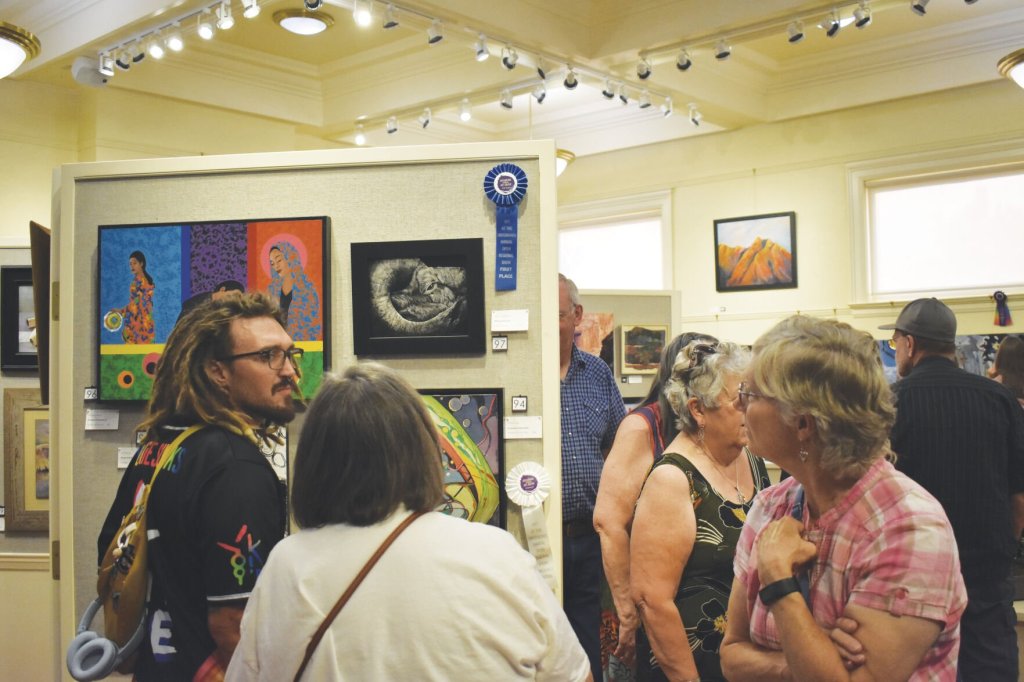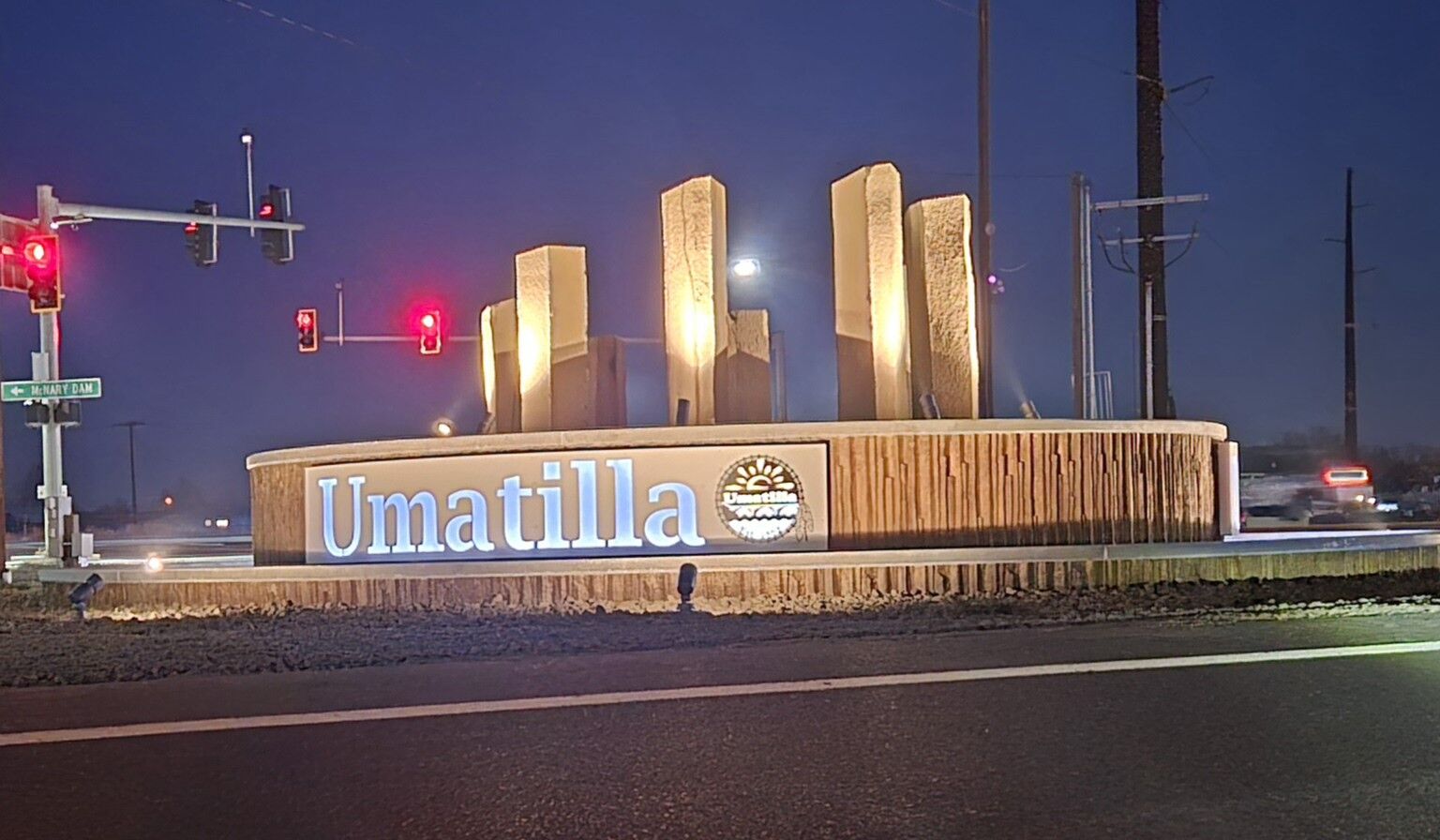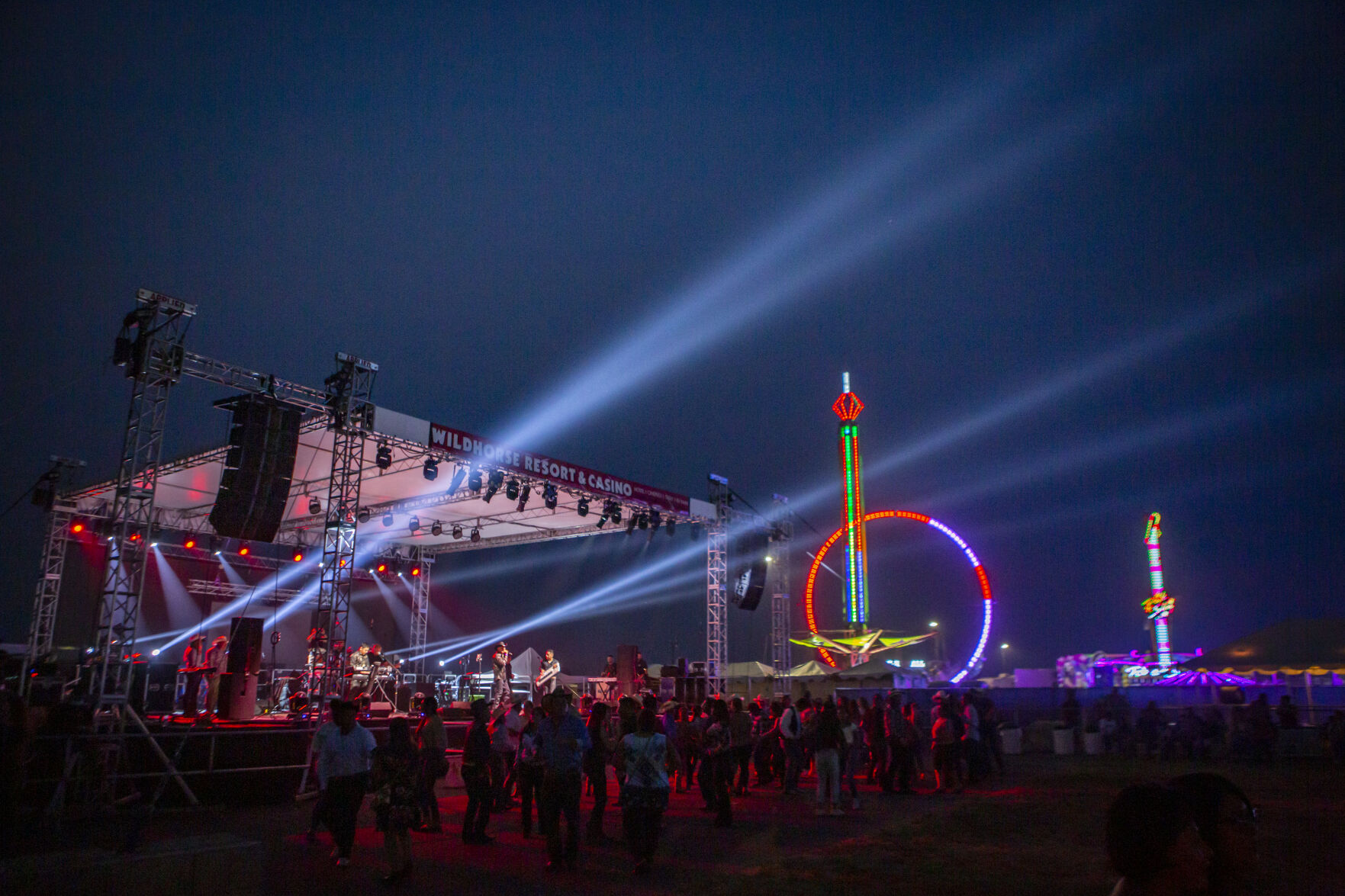Arts, culture and dollars
Published 6:00 am Tuesday, September 10, 2024

- A crowd tours the new art exhibit Sept. 6, 2024, at the Crossroads Carnegie Art Center in Baker City. A recent study by Americans for the Arts found arts and culture brings millions of dollars into Eastern Oregon each year.
A recent survey shows audiences spend millions of dollars each year at arts and culture events in Eastern Oregon, and Randy Cohen will explain the impact of those numbers during a series of public meetings around the region this month.
Trending
“Anybody who cares about the arts should be there. And I promise to make it fun,” he said. “Community leaders of all kinds will find this an eye-opening presentation.”
Cohen is the vice president of research for Americans for the Arts, based in Washington, D.C. In 1994, the organization published the first economic impact study that partnered with arts agencies in 33 communities.
The study was repeated every five years, and the Arts and Economic Prosperity 6 results were released in October 2023, based on surveys completed during fiscal year 2022. The survey covered 373 regions across all 50 states.
Trending
The Oregon Arts Commission partners with Americans for the Arts to conduct the survey.
Liora Sponko, senior program manager for the Oregon Arts Commission, said the first several surveys were focused on the Portland and Eugene areas, but the 2022 study expanded to 19 communities.
“I’m really grateful for the communities who raised their hand and said, ‘We want to participate,’” she said. “It’s really rare for communities to have local data, and they can use it to support any of their community goals.”
Million-dollar impact
According to the study, arts and culture in Oregon contributed $829 million to Oregon’s economy during 2022.
The survey was distributed at festivals, plays, concerts, literary events, film festivals, museums, and other activities related to arts and culture. Respondents answered questions about how much they spent to attend the event, such as meals, lodging, parking, babysitting, etc.
“Any place that had an audience,” said Stephanie Huffman, AEP6 project manager in Pendleton. “I tried to survey as diverse a selection as I could.”
Eastern Oregon participants were the city of Pendleton, Pendleton Center for the Arts, and the Northeast region of Baker, Union and Wallowa counties spearheaded by Crossroads Carnegie Art Center in Baker City, the Josephy Center for Arts and Culture in Joseph, Art Center East in La Grande and and the Northeast Oregon Economic Development District.
The Oregon Arts Commission, Travel Oregon and NEODD helped fund the Northeast region study. Funding partners in the Pendleton study were the Oregon Arts Commission, Pendleton Arts Commission, Crow’s Shadow Institute of the Arts, Oregon East Symphony, Pendleton Center for the Arts, Rivoli Theater Coalition, Tamastslikt Cultural Institute and Travel Oregon.
The Northeast region survey showed $6 million in economic activity. Of that total, arts and culture organizations spent $4.1 million, which translates to 144 jobs and $1.5 million in tax revenue to local, state and federal governments. The second part of the survey, for attendees, showed $1.9 million in audience expenses.
“For everybody who comes to Eastern Oregon, we can see how much money they leave behind,” said Ginger Savage, executive director of Crossroads Carnegie Art Center in Baker City.
In Pendleton, the survey recorded arts and culture organizations spent $7.7 million — 161 jobs and $1.9 million in tax revenue — and audiences spent nearly $7 million.
“It seems as if there’s always something going on in Pendleton, whether it’s celebrating music, art, Native culture or Western culture,” said Roberta Lavadour, executive director of the Pendleton Center for the Arts and commissioner for the Oregon Arts Commission. “To see the hard numbers in terms of the dollars that these activities bring to the community is both gratifying and humbling.”
Cohen said audiences in the Northeast region spent an average of $29.77 per person, per event — not including the price of admission.
The survey also asked for a ZIP code to track how many traveled to the event.
“Fifteen percent are from outside that region, and of course they spend more money,” Cohen said.
He said nonlocal attendees spent an average of $52.33 per event, not including the ticket price, and the survey found 75% of nonlocals traveled specifically for the arts or culture event.
Also, he said 10% of the nonlocal audience members stayed overnight for an additional average cost of $142.
“You get that head in the bed and the cash registers start ringing,” he said.
In Pendleton, attendees spent $33.50 per person, per event, while nonlocals spent $87.26.
The survey also asked social impact questions, Cohen said, and results from the showed that:
- 89% (Northeast) and 92% (Pendleton) agree that the activity or venue where they were surveyed “is inspiring a sense of pride in this neighborhood or community.”
- 87% (Northeast) and 92% (Pendleton) agree that “I would feel a great sense of loss if this activity or venue were no longer available.”
- 85% (Northeast) and 86% (Pendleton) agree that the venue or facility where they were surveyed is “an important pillar for me within my community.”
“It’s part of our history, our heritage, the story of our community,” Cohen said. “Arts aren’t just nice — they’re necessary.”
He noted the survey started in May 2022 when events were coming back after the pandemic.
“First to close, last to open,” he said.
Cohen said a 2021 Johns Hopkins University study found arts nonprofits lost jobs at five times the rate of other nonprofits. He also said the return rate to events was estimated at two-thirds to three-quarters of normal attendance in 2023.
But people did come back.
“The arts got us out of our houses and into the community,” he said. “Arts are kindling for the economy.”
Presentations
Cohen presented the data in nine Oregon cities last fall, and this month he will visit six communities in Eastern Oregon. The sessions, are open to the public.
- Ontario: Monday, Sept. 16, 10 a.m. (Mountain time) at Four Rivers Cultural Center, 676 SW Fifth Ave. For information, call 917-705-4264.
- Baker City: Monday, Sept. 16, 1 p.m. at Crossroads Carnegie Art Center, 2020 Auburn Ave. For information, call 541-523-5369.
- Joseph: Tuesday, Sept. 17, 5:30 p.m. at the Josephy Center for Arts and Culture, 403 N. Main St. RSVP by calling 541-432-0505.
- La Grande: Wednesday, Sept. 18, 10 a.m. at Press Room Coffee and Books, 1124 Washington Ave. Space is limited; for information, call 541-624-2800.
- Pendleton: Wednesday, Sept. 18, 2 p.m. at Pendleton Center for the Arts, 214 N. Main St. RSVP to stephanie.huffman@pendletonor.gov or 541-966-0239.
- Hood River: Thursday, Sept. 19, noon at Columbia Center for the Arts, 215 Cascade Ave. RSVP to columbiagorgetourismalliance.org.
Using the data
Cohen said survey results such as AEP6 can help arts and culture organizations show the economic impact when applying for foundation grants or seeking support from local groups or governments.
Lavadour said the data “will be a great tool for showing businesses, individuals and governmental entities why support for art and culture activities isn’t just a feel-good exercise, but that it makes sound economic sense.”
The numbers, Sponko said, show how important arts and culture are to the town.
“This data makes the case of why it’s important, and how it brings money to the community,” she said. “It’s helping paint the picture that arts and culture support the broader community.”
Darcy Dolge, executive director of Art Center East in La Grande, said the AEP6 survey “highlights the essential role that arts and culture play in our community’s vibrancy and economic health.”
“Art Center East is proud to contribute to a thriving arts ecosystem that enriches lives, drives local economic growth, supports jobs, attracts visitors, and fosters a strong sense of community,” she said. “The data underscores the value of continued investment in the arts.”







